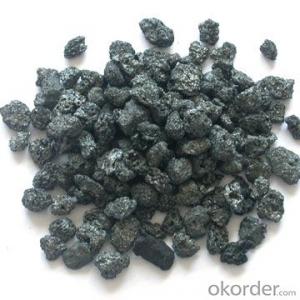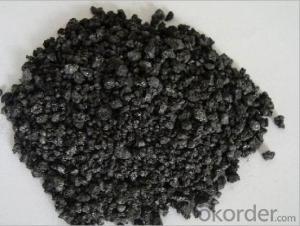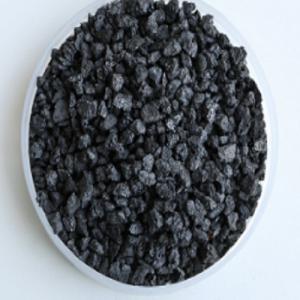Calcined Peroleum Coke with good quality
- Loading Port:
- Tianjin
- Payment Terms:
- TT OR LC
- Min Order Qty:
- 20 m.t.
- Supply Capability:
- 2000 m.t./month
OKorder Service Pledge
OKorder Financial Service
You Might Also Like
Packaging & Delivery
25kgs/50kgs/1ton per bag or as buyer's request
Calcined Petroleum Coke is a critical ingredient in the production of Metallurgy and chemical industrial ,it can increase the used quantity of Scrap steel and reduce the quantity of Scrap iron, or use no Scrap iron at all, the calcined petroleum coke has follow properties: high absorptive character, no residue will be left and save production cost.
Specifications
Calcined Anthracite
1.low sulphur, low ash
2.fixed carbon:95% -90%
3.sulphur:lower than 0.3%
4.Calcined Anthracite Coal
Advantage and competitive of caclined anthracite:
1. strong supply capability
2. fast transportation
3. lower and reasonable price for your reference
4.low sulphur, low ash
5.fixed carbon:95% -90%
6..sulphur:lower than 0.3%
General Specification of Calcined Anthracite:
| FC % | 98.5 | 98.5 | 98.5 | 99 |
| ASH % | 0.8 | 0.8 | 0.8 | 0.5 |
| V.M. % | 0.7 | 0.7 | 0.7 | 0.5 |
| S % | 0.5 | 0.55 | 0.7 | 0.5 |
| MOISTURE % | 0.5 | 0.5 | 0.5 | 0.5 |
Picture of CPC/ Calcined Petroleum Coke
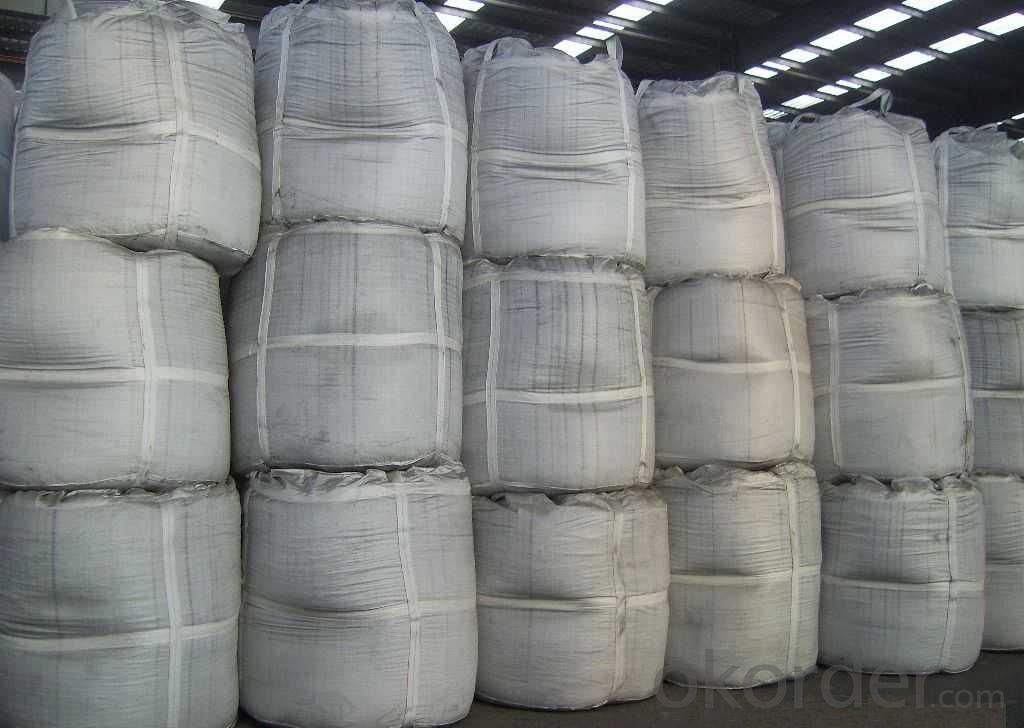
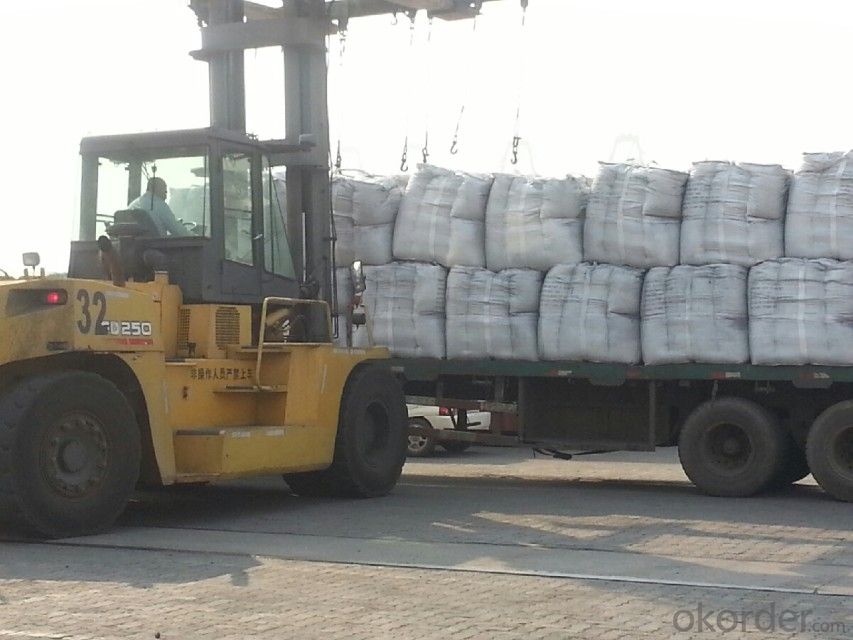
- Q: Why is carbon content of stainless steel low?
- The corrosion resistance of stainless steel decreases with the increase of carbon content. Therefore, the carbon content of most stainless steel is lower, the maximum is not more than 1.2%, and some steel's Omega C (carbon content) is even less than 0.03% (such as 00Cr12). The main alloying element in stainless steel is Cr (chromium), and the steel has corrosion resistance only when the Cr content reaches a certain value. Therefore, stainless steel in general Cr (chromium) content of at least 10.5%. Stainless steel also contains Ni, Ti, Mn, N, Nb, Mo, Si, Cu and other elements.
- Q: What are the different types of carbon-based polymers?
- There are several different types of carbon-based polymers, including polyethylene, polypropylene, polystyrene, polyvinyl chloride (PVC), and polyurethane.
- Q: How can individuals reduce their carbon footprint?
- Achieving a more sustainable future and reducing our carbon footprint can be accomplished through various actions. Consider the following effective methods: 1. Energy consumption reduction: The conservation of energy plays a vital role in decreasing carbon emissions. Make the switch to energy-efficient appliances, turn off lights when not in use, unplug electronics when not in use, and take advantage of natural lighting whenever possible. Additionally, adjusting thermostats to energy-saving temperatures and utilizing programmable thermostats can significantly decrease energy consumption. 2. Utilize renewable energy sources: A transition to renewable energy sources, such as solar or wind power, can drastically reduce carbon emissions. Install solar panels on rooftops, or explore the option of purchasing green energy from utility companies that provide renewable alternatives. 3. Decrease water usage: Indirectly, conserving water aids in reducing energy consumption and carbon emissions. Repair leaky faucets, shorten shower durations, install water-saving fixtures, and gather rainwater for outdoor activities. Additionally, consider implementing drought-resistant landscaping to minimize water usage for gardening purposes. 4. Consume mindfully: When making purchases, opt for sustainable choices. Select durable and long-lasting items, repair and reuse rather than replacing, and prioritize products made from recycled or sustainable materials. Furthermore, support local and sustainable businesses that prioritize eco-friendly practices. 5. Minimize transportation emissions: Reduce reliance on private vehicles by utilizing public transportation, carpooling, biking, or walking whenever feasible. If owning a car is necessary, choose electric or hybrid vehicles. Regular maintenance, proper tire inflation, and avoiding unnecessary idling all contribute to decreasing transportation emissions. 6. Embrace a plant-based diet: The food industry has a considerable carbon footprint, particularly due to livestock production. By reducing meat consumption or adopting a plant-based diet, carbon emissions can be significantly reduced while also offering health benefits. If a complete plant-based diet is not feasible, try incorporating more vegetarian or vegan meals into your eating habits. 7. Decrease waste generation: Waste contributes to greenhouse gas emissions, making waste reduction crucial. Opt for products with minimal packaging, diligently recycle, compost organic waste, and avoid single-use plastics. Plan meals, only purchase what is needed, and properly store leftovers to minimize food waste. 8. Support environmental initiatives and organizations: Engage with local and global organizations dedicated to environmental conservation. Take part in community clean-ups, support reforestation efforts, and advocate for sustainable practices in your workplace and community. By implementing these strategies into our daily lives, individuals can make a significant impact in reducing their carbon footprint and combating climate change. It is important to remember that every small action matters, and collectively, we can create a sustainable future for future generations.
- Q: What is the structure of carbon-based polymers?
- The structure of carbon-based polymers involves long chains or networks of carbon atoms linked together by covalent bonds, forming the backbone of the polymer. These carbon atoms are typically bonded to other atoms such as hydrogen, oxygen, nitrogen, or halogens, which contribute to the overall properties and functionality of the polymer. The repeating units, or monomers, are connected through chemical reactions known as polymerization, resulting in a diverse range of structures and properties in carbon-based polymers.
- Q: What are the effects of carbon emissions on the stability of coastal ecosystems?
- Carbon emissions have significant negative effects on the stability of coastal ecosystems. The increased concentration of carbon dioxide in the atmosphere leads to ocean acidification, which disrupts the delicate balance of marine ecosystems. This acidity affects the growth and development of various organisms such as corals, shellfish, and other calcifying organisms, jeopardizing the health of coral reefs and shellfish populations. Additionally, rising sea levels, a result of climate change caused by carbon emissions, threaten coastal habitats, including wetlands and mangroves, which serve as critical nurseries and protective buffers against storms. Overall, carbon emissions contribute to the degradation and vulnerability of coastal ecosystems, compromising their stability and the services they provide to both marine life and human communities.
- Q: DNF new advanced furnace rock carbon reinforcement +10 50 powder weapons, the upper 11 probability of success is how much, how many advanced furnace rock carbon?
- Seemingly increased only 3.39 small, if we can make the cost of reaching the 80% chance of strengthening, so strengthen the probability of using advanced carbon can reach 88%. Why do you say that? First of all, let's make sure that the random ones in the game are fake. No matter what, random in the game is not real, but computer controlled pseudo random. There are two pseudo random, I simply explain. One is to simulate the real random situation, such as the weather forecast by computer simulation, in this case the random also is not true, because we had already entered the specific results, no matter how the computer is random, will have sun or rain and thunder like, the computer can not simulate the RMB under the sky the weather, because the program did not give it such a result, so although it seems very real, is actually false, is pseudo random. The other is random, which contains certain specific rules, which are widely used in competitive games, which is what we usually call the reinforcement probability. The reinforcement rate is 28%, with fixed values, but it is also controlled by the program and is pseudorandom. The reinforcement of odds is not what we imagine, but the effect of seeing Kylie's sister's feelings, whether successful or not, affects the chances of the next reinforcement. In this case, each reinforcement is not an independent event because it is affected by what happened before, and for each of the truly random or previous pseudo random events, each should be an independent event. Take random hits in the game as an example.
- Q: What is the carbon footprint of different activities?
- The carbon footprint of different activities refers to the amount of greenhouse gas emissions, particularly carbon dioxide (CO2), that are released into the atmosphere as a result of carrying out those activities. It is a measure of the impact that these activities have on climate change. Various activities contribute to our carbon footprint, including transportation, energy use, food production, and waste management. The carbon footprint of each activity can vary significantly depending on factors such as the type of energy sources used, the efficiency of technologies involved, and individual choices. Transportation is a major contributor to carbon emissions, with cars, planes, and ships being the primary sources. The use of fossil fuels in these modes of transportation releases CO2 into the atmosphere. The type of vehicle, fuel efficiency, and distance traveled all play a role in determining the carbon footprint of transportation. Energy use is another significant contributor, particularly in the form of electricity generation. Burning fossil fuels like coal and natural gas to produce electricity releases CO2. However, renewable energy sources like wind, solar, and hydroelectric power have a lower carbon footprint as they do not emit greenhouse gases during operation. Food production is often overlooked but has a substantial carbon footprint. The agricultural practices involved in growing, processing, packaging, and transporting food contribute to emissions. Additionally, livestock farming, particularly beef and lamb, produces significant amounts of methane, a potent greenhouse gas. Waste management also contributes to carbon emissions, primarily through the decomposition of organic waste in landfills. As organic waste breaks down, it produces methane. Proper waste management techniques, such as composting and anaerobic digestion, can help reduce these emissions. It is important to note that the carbon footprint of activities can be reduced through various measures. Adopting energy-efficient technologies, using public transportation or carpooling, choosing renewable energy sources, eating a more sustainable diet, and practicing proper waste management are all ways to minimize our carbon footprint. Understanding the carbon footprint of different activities allows individuals, businesses, and governments to make informed decisions and take necessary actions to mitigate climate change. By reducing our carbon footprint, we can contribute to a more sustainable and environmentally-friendly future.
- Q: What are the impacts of carbon emissions on the stability of coral reefs?
- Carbon emissions have significant impacts on the stability of coral reefs. Increased carbon dioxide levels in the atmosphere lead to ocean acidification, which hinders coral reef growth and weakens their structural integrity. Additionally, rising sea temperatures due to carbon emissions result in coral bleaching, where corals expel the symbiotic algae they depend on for survival. These combined effects make coral reefs more susceptible to disease outbreaks, slow recovery from disturbances, and ultimately increases the risk of their collapse, posing a significant threat to marine biodiversity and coastal communities that rely on them.
- Q: What are the impacts of carbon emissions on the stability of tundra ecosystems?
- Carbon emissions have significant impacts on the stability of tundra ecosystems. As carbon dioxide levels increase in the atmosphere due to human activities, such as burning fossil fuels, it leads to global warming. Tundra ecosystems are particularly vulnerable to this warming trend. The increase in temperature causes the permafrost to thaw, resulting in the release of large amounts of stored carbon into the atmosphere as methane, a potent greenhouse gas. This feedback loop intensifies climate change, further impacting the stability of tundra ecosystems. Additionally, the warmer conditions allow for the expansion of shrubs and trees into the tundra, altering the delicate balance of plant species and disrupting the habitat for specialized tundra organisms. Overall, carbon emissions contribute to the destabilization of tundra ecosystems, leading to changes in biodiversity, permafrost degradation, and potential release of more greenhouse gases, exacerbating climate change.
- Q: What are the economic impacts of carbon emissions?
- Carbon emissions have wide-ranging and significant economic effects. These emissions, primarily from burning fossil fuels, contribute to climate change and global warming. The resulting climate changes directly impact various economic sectors and can have both short and long-term economic consequences. Dealing with the effects of climate change is one of the most noticeable economic impacts of carbon emissions. As a result of these emissions, extreme weather events like hurricanes, floods, and droughts become more frequent and intense. These events cause extensive damage to infrastructure, homes, and businesses, resulting in significant economic losses. For instance, in 2017, the United States experienced a record-breaking hurricane season, with hurricanes Harvey, Irma, and Maria causing approximately $265 billion in damages. Furthermore, carbon emissions also affect agricultural productivity. Climate change alters temperature and precipitation patterns, disrupting crop production and reducing yields. This, in turn, impacts food prices and availability, affecting both consumers and farmers. Additionally, carbon emissions contribute to ocean acidification, which harms marine ecosystems and disrupts fisheries, leading to economic losses for fishing communities. Moreover, carbon emissions have implications for public health, creating economic burdens. Air pollution caused by carbon emissions can lead to respiratory and cardiovascular illnesses, increasing healthcare costs and reducing workforce productivity. Additionally, extreme heatwaves, exacerbated by carbon emissions, negatively impact worker productivity and labor capacity, affecting economic output. To mitigate the economic impacts of carbon emissions, many countries have implemented policies and regulations to reduce greenhouse gas emissions. These policies often involve carbon pricing mechanisms, such as carbon taxes or cap-and-trade systems, that aim to incentivize the transition to cleaner energy sources and decrease carbon emissions. While these policies may have short-term economic costs, they also create opportunities for innovation and the development of green technologies, leading to long-term economic benefits. In conclusion, the economic impacts of carbon emissions are significant and diverse. They range from the costs associated with climate-related disasters to the effects on agriculture, public health, and productivity. Addressing these impacts through effective climate policies is vital to mitigate economic risks and promote a sustainable and resilient economy.
Send your message to us
Calcined Peroleum Coke with good quality
- Loading Port:
- Tianjin
- Payment Terms:
- TT OR LC
- Min Order Qty:
- 20 m.t.
- Supply Capability:
- 2000 m.t./month
OKorder Service Pledge
OKorder Financial Service
Similar products
Hot products
Hot Searches
